IoT Pesticide Networks: Data Security Risks
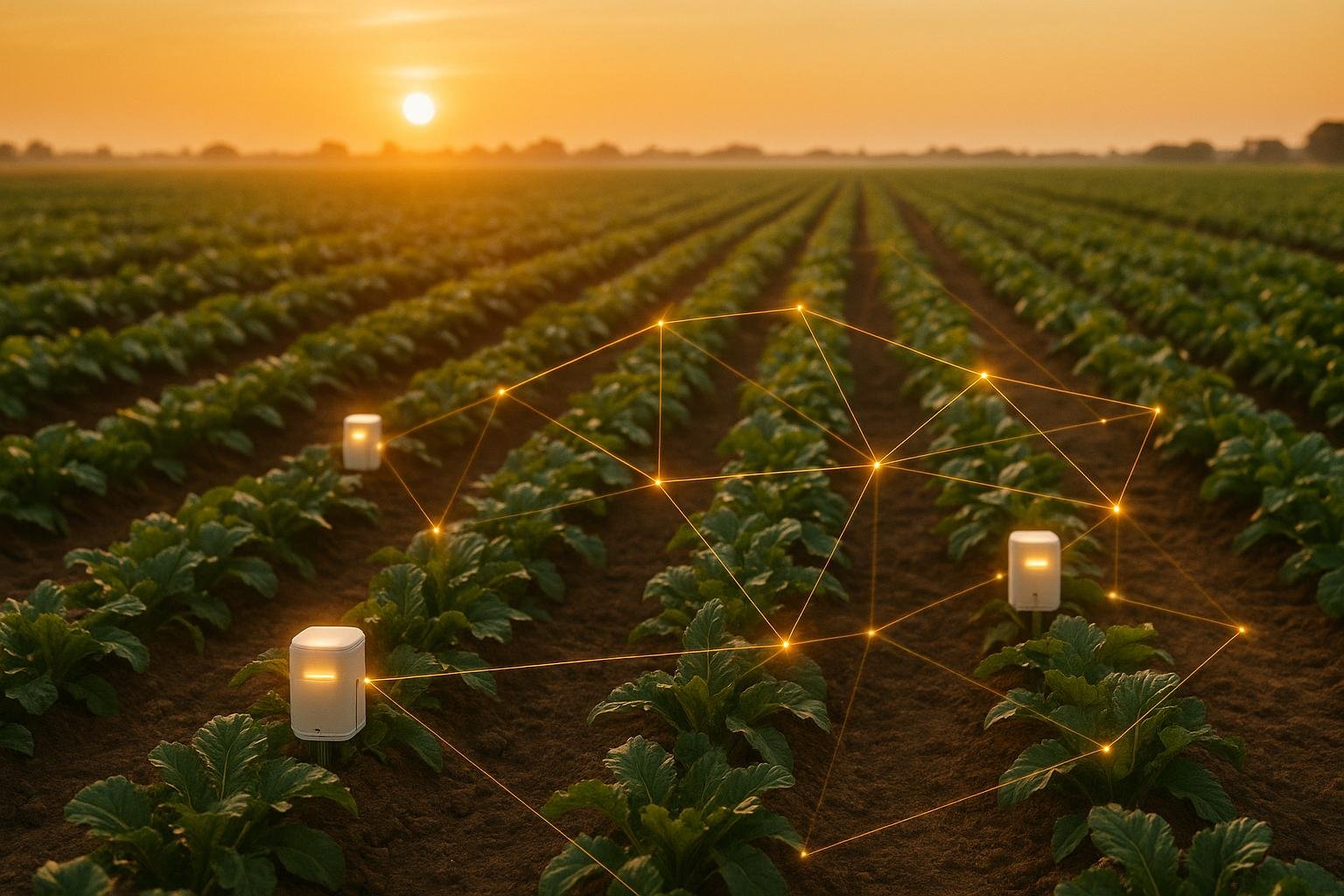
IoT pesticide networks are transforming farming by using sensors, automated systems, and cloud platforms to apply pesticides precisely. While these systems improve efficiency and reduce waste, they also face serious cybersecurity threats. Key risks include:
- Weak Authentication: Poor password practices leave systems exposed to breaches.
- Data Tampering: Hackers can manipulate sensor data, leading to improper pesticide use.
- Privacy Concerns: Sensitive farm data can be collected and misused without proper consent.
- Physical Vulnerabilities: Devices in remote areas are prone to tampering or damage.
Solutions to Mitigate Risks
- Strong Authentication: Use multi-factor authentication and secure passwords.
- Data Encryption: Protect data during transmission with advanced encryption standards.
- Regular Updates: Automate firmware updates to fix vulnerabilities.
- Physical Security: Use tamper-proof enclosures and monitor devices in the field.
- Network Segmentation: Isolate IoT devices from critical systems to limit damage from breaches.
With IoT adoption in agriculture growing rapidly, addressing these security challenges is critical to protect food production and ensure system reliability.
Seeds, Sensors, and Security: Harvesting Safety Across the New Terrain of Tech-Enabled Agriculture

Main Data Security Risks in IoT Pesticide Networks
IoT pesticide networks play a crucial role in modern agriculture, but they also come with notable security risks that can impact crop production and operational efficiency. Let's break down the three main threats and consider potential solutions.
Unauthorized Access and Data Breaches
Weak authentication systems are a glaring vulnerability in IoT pesticide networks, making them prime targets for cybercriminals. A report from Cisco's 2024 Cybersecurity Readiness Index revealed that only 3% of organizations are adequately prepared to handle IoT-related cybersecurity challenges [3].
Many IoT devices operate with limited encryption capabilities, leaving sensitive data - like crop conditions, pesticide schedules, and farm operations - exposed during transmission. Additionally, inconsistent security standards across manufacturers create further opportunities for exploitation.
The risks are not hypothetical. Take the May 2021 ransomware attack on JBS Foods, the world's largest meat processing company. Although unrelated to IoT pesticide networks, this incident highlights how cyberattacks on agricultural supply chains can lead to significant disruptions and financial losses [4]. It serves as a warning for the agricultural sector to prioritize cybersecurity.
Data Tampering and Integrity Issues
Data tampering is another serious concern, especially when attackers manipulate sensor readings to provide false information. For example, altered data on soil moisture, pest levels, or weather conditions can mislead automated systems, triggering unnecessary pesticide applications or skipping critical treatments altogether.
This kind of interference undermines trust in IoT systems and directly impacts agricultural outcomes. AI-driven networks, which rely heavily on sensor data, are particularly vulnerable. False inputs can lead to overuse of chemicals, crop damage, and interruptions in production schedules [5].
Privacy and Physical Security Problems
IoT pesticide networks also bring up privacy and physical security challenges. These systems collect vast amounts of data, often without clear consent from farmers, raising concerns about unauthorized data harvesting and potential misuse. Many farmers remain unaware of how their data is collected and stored, leaving them exposed to cyberattacks [6].
Physical security is another weak point. Sensors, actuators, and other IoT components are often placed in remote outdoor areas, making them susceptible to accidental damage or deliberate tampering. Such disruptions can corrupt data or render systems inoperable during critical pesticide application periods. Automated equipment like drones and tractors introduces additional risks, as these systems could be hacked, leading to crop damage or financial losses [5].
As global food demand continues to rise - the Food and Agriculture Organization estimates a 70% increase by 2050 - the agricultural sector's reliance on IoT pesticide networks will only deepen. This growing dependence makes these systems an appealing target for cybercriminals. Addressing gaps in user awareness and implementing strong security practices will be essential to safeguarding these networks [6].
Solutions to Reduce Data Security Risks
Securing IoT pesticide networks requires a layered strategy that tackles authentication, data protection, and physical security. These steps can significantly cut down vulnerabilities and bolster agricultural systems against cyber threats.
Strengthening Authentication and Access Control
The first step in protecting IoT pesticide networks is implementing strong authentication measures. This includes using multi-factor authentication (MFA), replacing default credentials with unique, frequently updated passwords, and securing communications with TLS protocols [7][8].
Strict access controls are equally important. For instance, role-based permissions can ensure that a pesticide technician only accesses spray scheduling data, while farm managers have access to broader system functions [7]. These precautions directly address the risks of unauthorized access and data breaches.
Encrypting Data and Updating Firmware
Once access controls are in place, the next priority is securing data transmission and maintaining system integrity. Data encryption is key - it converts sensitive information into an unreadable format, safeguarding it during transfers between IoT devices, cloud systems, and users [9]. This is critical for preventing man-in-the-middle attacks, breaches, and eavesdropping.
Using advanced encryption standards like AES or ECC ensures data remains secure, even in time-sensitive applications [10][12]. Additionally, automating firmware and security patch updates is essential. A report from Microsoft's Digital Defense Report 2023 revealed that 57% of devices running outdated firmware are vulnerable to security exploits, and firmware attacks have surged over fivefold in the past four years [13].
Secure boot processes can further enhance protection by ensuring only trusted, digitally signed firmware is installed. This step is crucial since firmware often stores sensitive information, such as encryption keys, within device memory [11][13].
Enhancing Physical and Network Security
Digital safeguards alone aren’t enough - physical and network measures are also vital. Tamper-resistant enclosures and detection systems can protect field-deployed sensors from theft or damage [4].
On the network side, segmentation is a powerful tool. Isolating IoT devices from critical business systems using VLANs can limit the impact of a breach. For example, if one group of sensors is compromised, the rest of the system remains unaffected. Continuous monitoring of network activity can detect unusual patterns that may signal security threats [14].
Real-world examples of effective IoT security in pest management include Anticimex's SMART Digital Rodent Control System, which uses predictive algorithms and secure data transmission to detect infestations early, and Rentokil's PestConnect system, which provides 24/7 monitoring with real-time encrypted alerts [1].
Regular security audits are another critical step. These assessments should review both technical vulnerabilities and operational procedures to ensure compliance with agricultural data protection standards and best practices [14].
With only 13% of the global population employing data protection measures as of 2023 [12], it's clear that investing in robust security practices is increasingly important as agriculture becomes more reliant on IoT systems.
sbb-itb-4d6a8dd
🚀 Ready to Reinvent Your Garden?
Join thousands of homeowners who have transformed their gardens using our AI design tool. Upload one photo to explore endless possibilities.
Get your AI garden designs →Security Risks and Solutions Comparison Table
Identifying specific threats and aligning them with effective solutions is key to safeguarding IoT pesticide networks in agricultural settings. The table below outlines common risks and their corresponding strategies:
| Security Risk | Mitigation Strategy |
|---|---|
| Unauthorized Access | Multi-factor authentication and strong password policies |
| Data Breaches | Data encryption and network segmentation |
| Firmware Vulnerabilities | Automated security updates and secure boot processes |
| Physical Device Tampering | Tamper-resistant enclosures and intrusion detection systems |
| DNS and Network Attacks | DNS Security Extensions and continuous network monitoring |
| IoT Botnet Infiltration | Network segmentation and threat detection software |
| Unencrypted Data Transmission | TLS protocols and end-to-end encryption |
| Shadow IoT Devices | Comprehensive asset management and device visibility programs |
The urgency of addressing these risks is underscored by the numbers: IoT attacks surged by 124% in 2024, with corporate IoT devices being the primary targets. By the end of the year, 18.8 billion IoT devices were connected globally, presenting an ever-expanding attack surface for malicious actors [15].
Balancing Cost and Protection
Security solutions vary significantly in cost and complexity. Simple measures, like enforcing strong password policies and scheduling regular firmware updates, are cost-effective and yield substantial protection. On the other hand, advanced strategies such as network segmentation and continuous monitoring require more significant investments but deliver robust, long-term security.
When prioritizing security measures, it's wise to focus on addressing the most critical vulnerabilities first. For instance, implementing data encryption and multi-factor authentication provides a strong foundation, as these measures can mitigate multiple threat types.
Scalability and Monitoring
For large-scale agricultural operations, scalability is a key consideration. Cloud-based security solutions and automated update systems are particularly effective, as they can adapt to growing IoT networks without adding excessive management burdens.
Continuous monitoring is equally essential for maintaining security. A 2024 survey revealed that 46% of security leaders struggled to achieve full visibility over IoT devices, highlighting the importance of real-time monitoring and comprehensive asset management [15]. Regular assessments of security measures ensure that defenses remain effective over time, keeping agricultural IoT networks resilient against evolving threats.
Best Practices for Secure IoT Pesticide Networks in the U.S.
Ensuring strong security for IoT pesticide networks in the U.S. involves a mix of complying with relevant regulations and fostering a workforce that prioritizes cybersecurity. Below, we’ll explore key laws and the role of training in maintaining secure operations.
Following U.S. Data Protection Laws
In the U.S., data privacy is shaped by a complex framework of federal, state, and local regulations. With no single nationwide privacy law, businesses must navigate this intricate landscape. For example, California alone enforces over 25 privacy and data security laws, including the California Consumer Privacy Act (CCPA). The CCPA grants individuals significant rights over their personal information, limiting its collection and processing. It’s enforced by the California Privacy Protection Agency, which also oversees compliance with related measures like the "Delete Act", requiring businesses to honor deletion requests for personal data [16].
On the federal level, the IoT Cybersecurity Improvement Act of 2020 mandates that any IoT devices purchased using government funds meet minimum security standards [17]. Additionally, the Federal Trade Commission (FTC) holds companies accountable for failing to implement adequate data security practices. Agricultural businesses must monitor these evolving regulations to ensure they handle sensitive information - such as pesticide usage data and farm worker records - securely and in compliance with the law.
Training and Awareness Programs
Human error is often the weakest link in IoT security, making employee training an essential part of any defense strategy [18]. Effective security training helps staff identify risks like phishing attempts, unusual device behavior, and the dangers of weak or default passwords.
Training should be tailored to different roles. Field workers can focus on basic device handling protocols, while managers learn advanced topics such as network monitoring and incident response. Practical training elements might include updating firmware regularly, replacing default usernames and passwords with strong, unique ones, enabling two-factor authentication, and implementing measures like network segmentation and end-to-end encryption [19].
Conducting regular security audits and vulnerability assessments can highlight areas for improvement, reinforcing training with actionable feedback. Ongoing refresher courses ensure that cybersecurity remains a top priority across all levels of operation.
Conclusion
IoT pesticide networks bring both immense potential and critical security challenges to American agriculture. With the agricultural IoT market expected to hit $22.65 billion by 2028 [22], and IoT innovations projected to add $350 billion to global food production by 2025 [2], the need to secure these systems has never been more pressing.
As discussed earlier, risks like unauthorized access and data manipulation can severely disrupt farming operations. Imagine compromised IoT devices interfering with irrigation systems - this could reduce crop yields and lower the quality of produce [21]. Beyond individual farms, cyberattacks targeting smart farms and IoT-enabled equipment pose a broader threat to the food production supply chain [20].
Thankfully, there are practical ways to address these challenges. Key measures include implementing multi-factor authentication, ensuring regular firmware updates, and using network segmentation to limit vulnerabilities [21].
But technical fixes alone aren't enough. A holistic strategy is crucial - one that combines these solutions with regulatory oversight and workforce training. With only 27% of U.S. farms currently adopting precision agriculture practices [23], addressing security concerns could unlock significant growth and help farmers fully embrace IoT technologies.
FAQs
How can farmers protect their data when using IoT pesticide networks?
Farmers can keep their data safe in IoT pesticide networks by adopting essential security measures. Start with strong access controls - things like multi-factor authentication and role-based permissions - to make sure only the right people can access sensitive data.
It’s also important to encrypt all data transmissions using secure protocols like HTTPS or TLS. This helps protect information from prying eyes during its journey across the network.
For an extra layer of security, use VPNs for remote access and strengthen your network with tools like firewalls and intrusion detection systems. Don’t forget to regularly update device firmware and stay alert for any vulnerabilities. These steps can go a long way in keeping your agricultural systems safe from cyber threats.
What are affordable ways for small farms to improve the security of their IoT pesticide systems?
Small farms can protect their IoT pesticide systems without spending a fortune by adopting a few straightforward measures:
- Separate networks for critical devices: Keep essential devices and data on their own network to reduce the risks if a breach occurs.
- Use strong passwords and encryption: Secure your systems with robust passwords and encrypt data to block unauthorized access and safeguard sensitive information.
- Stay updated and vigilant: Regularly update device firmware and keep an eye out for unusual activity to catch and address potential threats early.
These practical steps help small-scale farms safeguard their IoT systems effectively while keeping costs manageable.
What is network segmentation, and how does it protect IoT pesticide networks from cyber threats?
Network segmentation involves breaking a network into smaller, isolated parts to boost security. In IoT pesticide networks, this strategy plays a crucial role by containing malware or unauthorized access within a single segment. This means if one part of the network is compromised, the issue is confined, stopping it from spreading to the entire system.
By reducing the pathways available for attackers, segmentation makes it simpler to spot and manage breaches. It also provides extra protection for sensitive data and devices. Isolating critical components not only reinforces security but also limits the damage caused by potential cyberattacks.
🎨 Visualize Your Dream Garden Today!
Transform any outdoor space into a professional landscape design in minutes. Just upload a photo, choose your style, and let our AI do the rest.
Start your garden transformation now →Related posts
Related Articles

Infrared Imaging for AI Plant Stress Detection
Explore how infrared imaging and AI revolutionize plant stress detection, enabling early interventions and smarter farming practices.
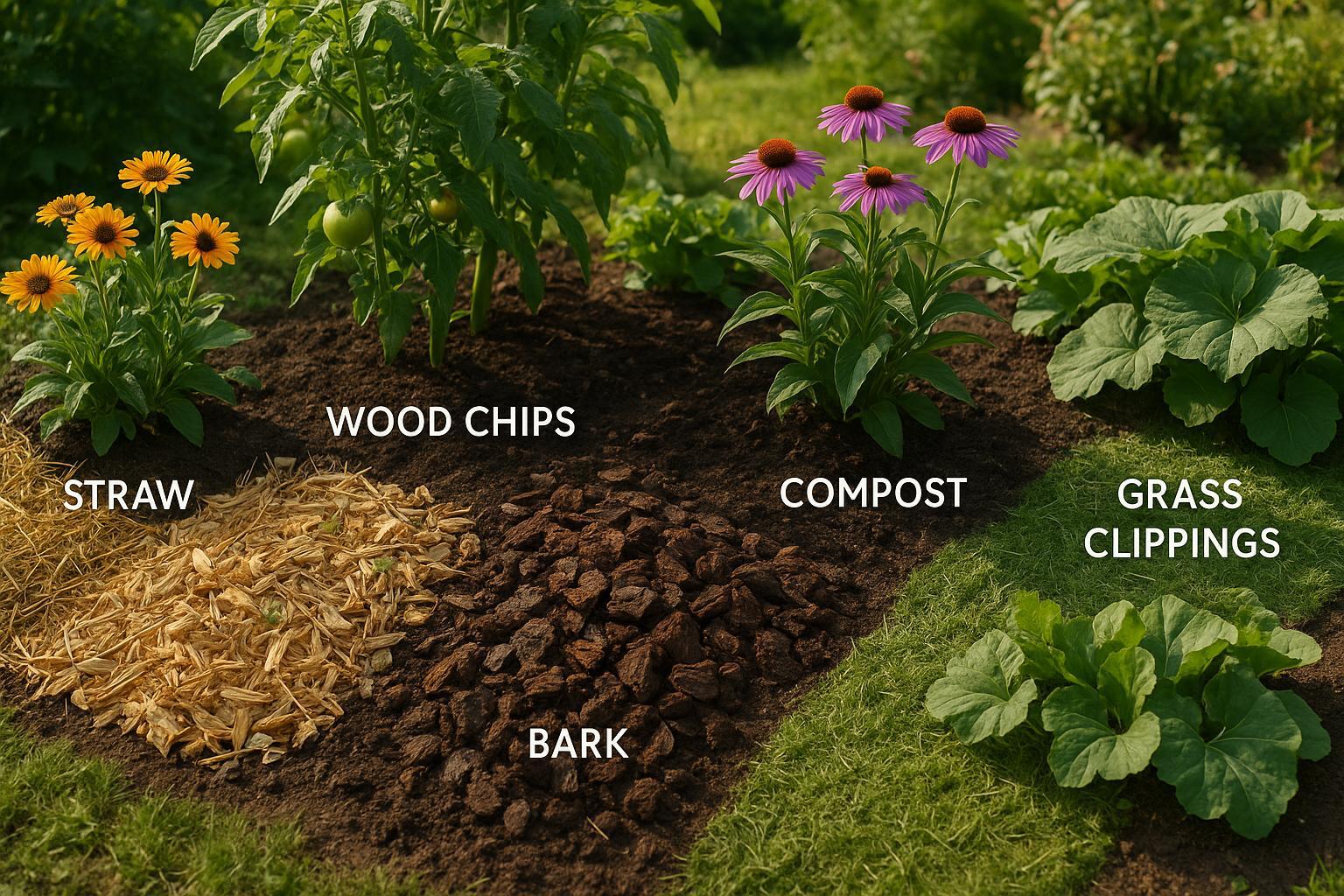
Top 5 Mulch Types for Sustainable Gardening
Explore the top 5 eco-friendly mulch types that enhance garden health, support plants, and promote sustainable gardening practices.
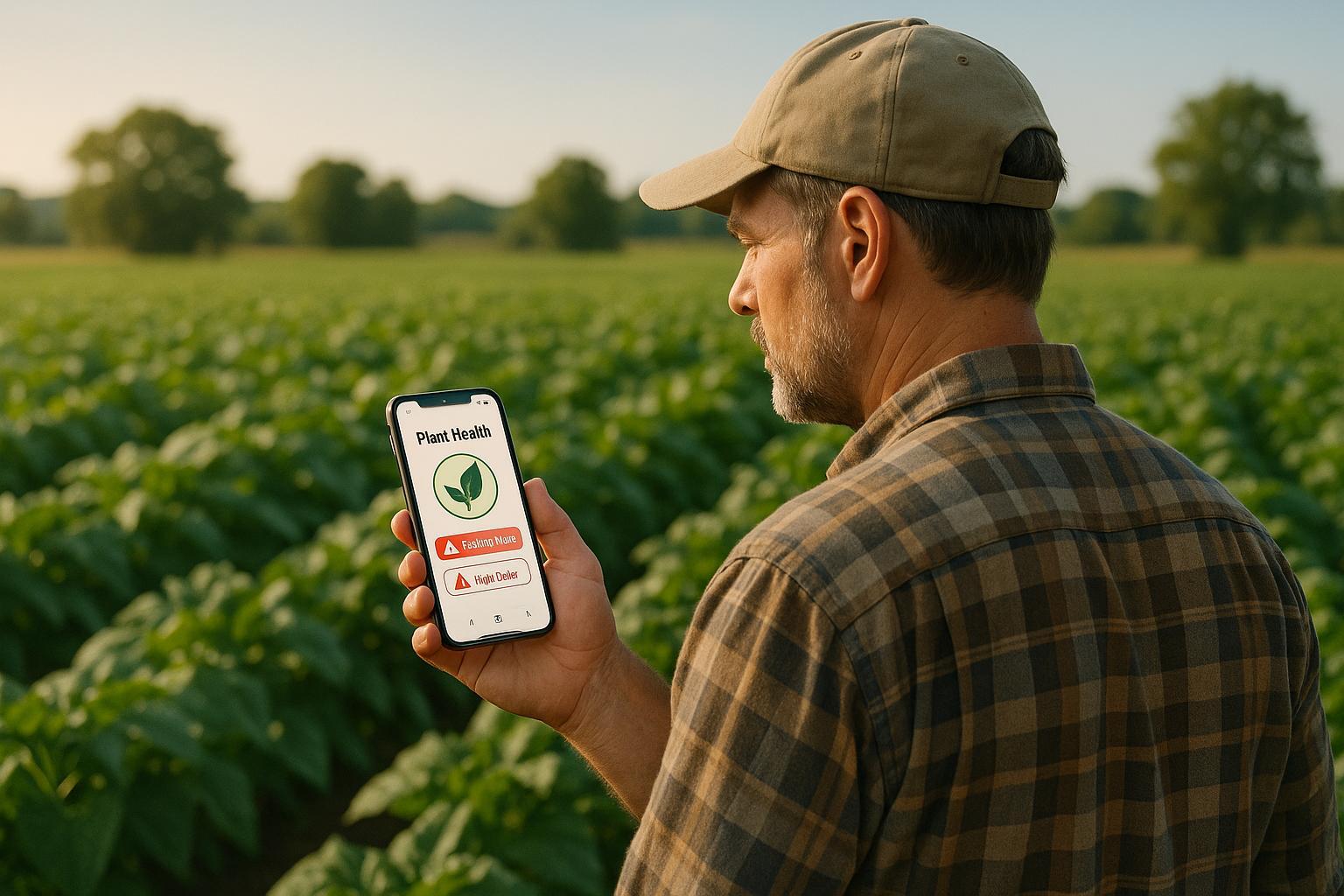
How Mobile Alerts Help Prevent Plant Disease Spread
Mobile alert systems revolutionize plant disease prevention by providing real-time monitoring and tailored alerts for gardeners and farmers.
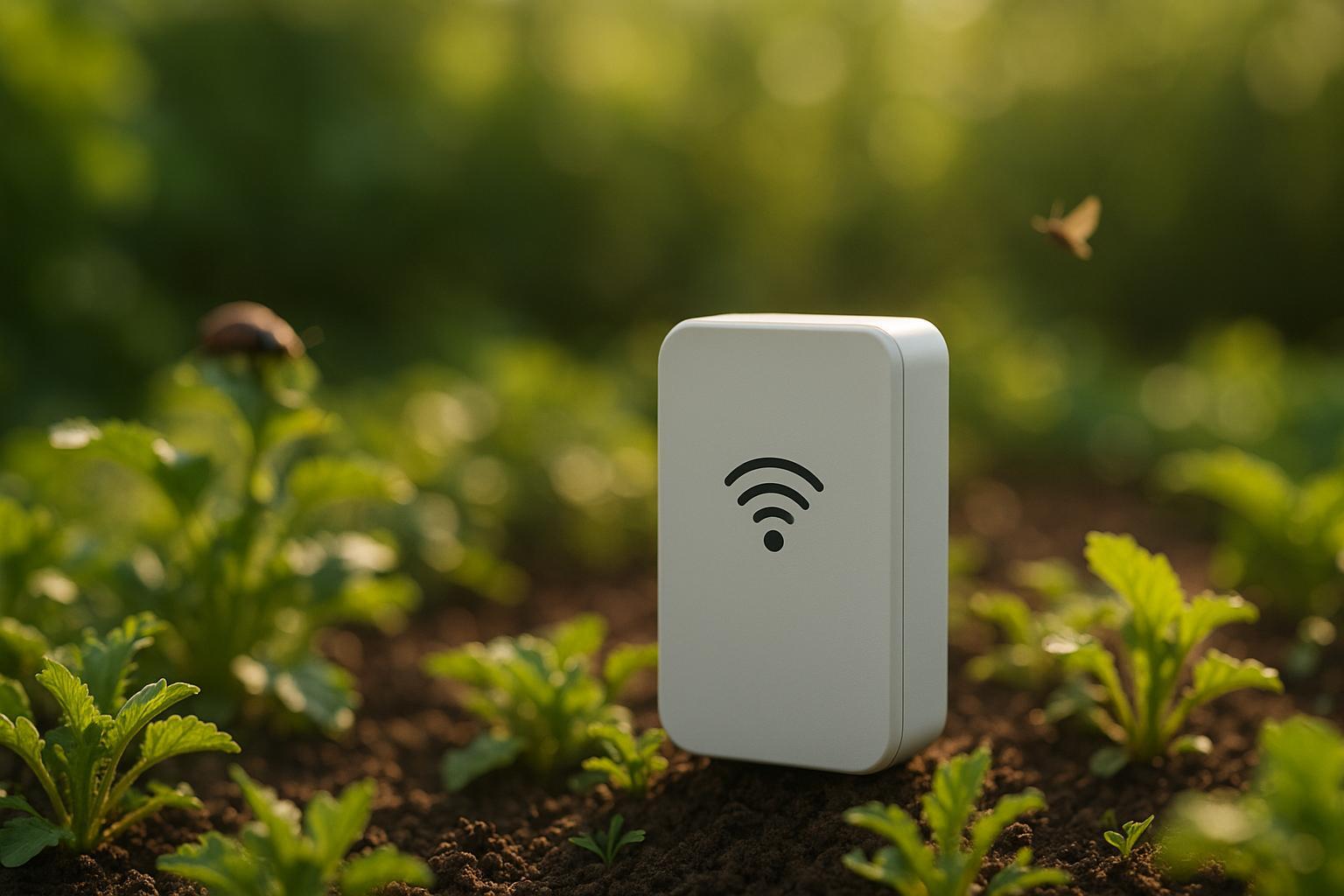
Ultimate Guide to Acoustic Pest Monitoring
Explore acoustic pest monitoring, a sound-based method that detects pests early, reduces pesticide use, and enhances garden management with AI.
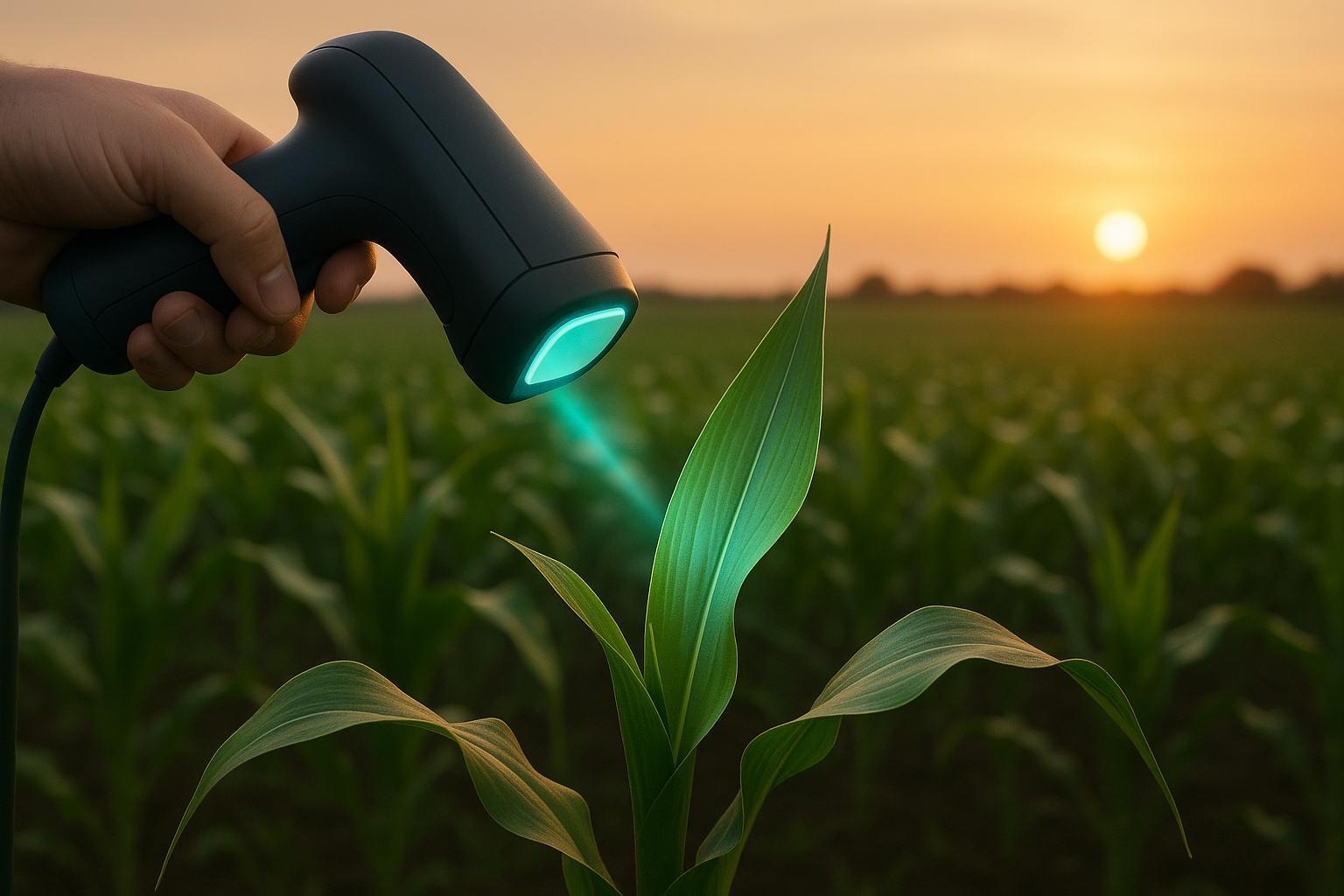
Imaging Techniques for Non-Destructive Disease Detection
Explore advanced imaging techniques revolutionizing non-destructive plant disease detection, enhancing early diagnosis and crop management.
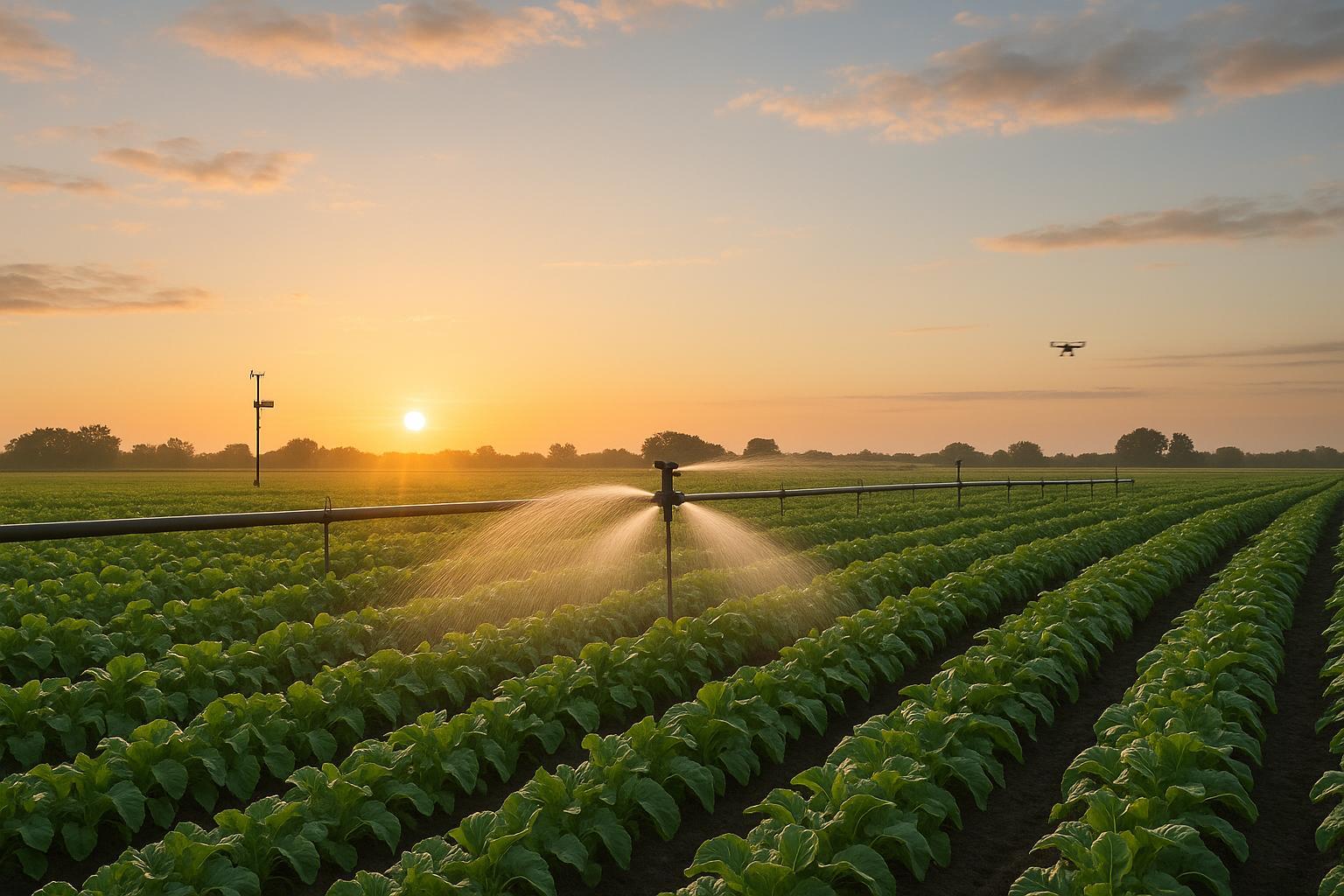
How AI Predicts Weather for Smarter Irrigation
Explore how AI-driven weather predictions optimize irrigation systems, enhancing water efficiency, crop yields, and cost savings for farmers.